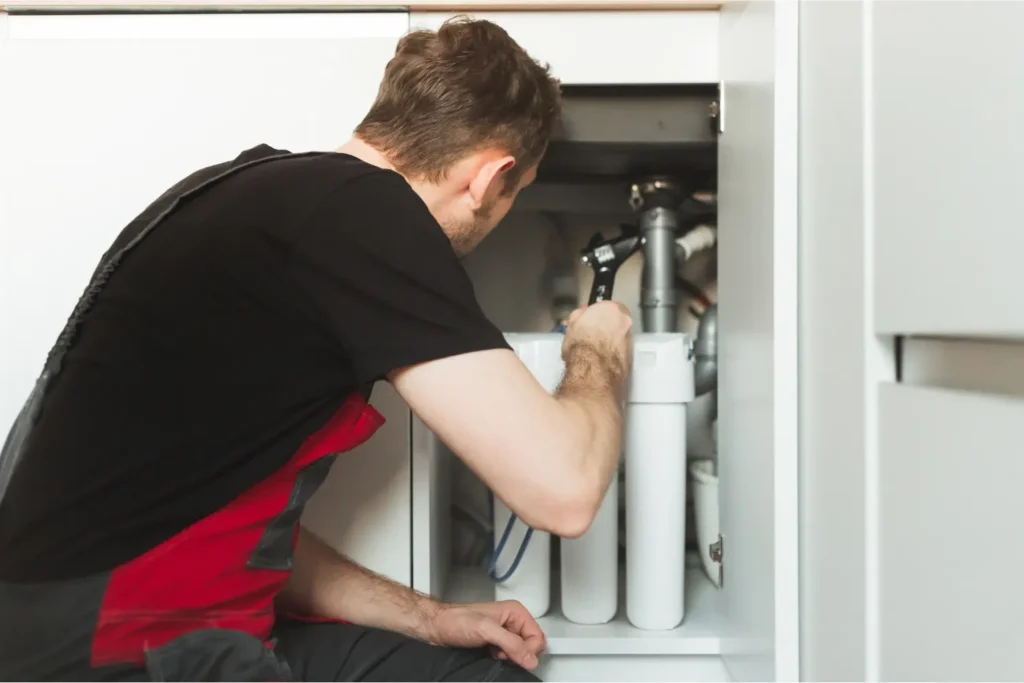Los Angeles homeowners know hard water is more than a nuisance—it’s a silent destroyer of pipes, fixtures, and appliances. From San Fernando Valley’s chalky scale to Beach Cities’ corrosion under salt-air, these real cases show why water hardness demands attention and action.
Dramatic Opening: A Real Horror Story Case
When the Ramirez family in North Hills called Hi-Tech Plumbing, they found a basement flooded and a collapsed water heater. Calcium deposits had clogged the heater’s drain valve until pressure burst the tank. Repair costs exceeded $5,000—and all from undetected hard water damage.
LA Water Reality: LADWP Data and Local Water Quality Facts
Los Angeles water hardness varies widely by region. In 2022, LADWP reported:
- San Fernando Valley & Western LA: 8.6 grains per gallon (147 mg/L CaCO₃), range 5.4–16.1 grains.
- Silver Lake, Downtown & South LA: 9.8 grains (168 mg/L), range 5.4–17.0 grains.
- Eastern LA & Harbor: 16.3 grains (279 mg/L), range 16.1–16.4 grains.
Imported Sierra Nevada and Colorado River supplies mix with local groundwater—each adding unique mineral profiles that drive hardness and vary city-to-city.
Regional Differences: How Water Varies Across LA County
Hard water impacts differ by area:
- San Fernando Valley: Moderately hard water leads to scale in showerheads and dishwashers.
- Beach Cities (Santa Monica, Manhattan Beach): Salt-air plus hardness accelerates chrome and brass corrosion.
- Downtown High-Rises: Hard water buildup on fixtures and pump strain in multi-story plumbing.
- Older Neighborhoods (Hancock Park): Aging pipes harbor years of mineral deposits, reducing flow.
- New Developments (Valley Village): Modern plumbing still suffers from high dissolved solids in imported water.
Case Studies: Real Scenarios from Different Areas
San Fernando Valley—Scale Clogs and Burst Valves
A Sherman Oaks homeowner noticed low water pressure and noisy pipes. Inspection revealed ¼″ of limescale inside branch lines. A blocked angle stop valve had corroded and failed, flooding the bathroom.
Beach Cities—Salt-Air Corrosion Meets Hard Water
In Manhattan Beach, a saltwater-humid attic combined with 168 mg/L hardness ate away brass fixture threads. Leaking at multiple joints went undetected until drywall damage appeared.
Downtown High-Rise—Reduced Flow & Pump Overload
A Century City condominium reported water hammer and weak shower flow. Hard water scale on pressure reducing valves and circulating pumps forced a full system flush and valve replacement.
Older Neighborhood Pipe Deterioration
In South Gate, decades-old galvanized pipes lined with calcium deposits fractured under normal pressure, resulting in emergency repiping.
Hidden Damage: Long-Term Effects Homeowners Don’t See
- Reduced pipe diameter lowers flow and increases heating times.
- Appliance heating elements fail prematurely under scale buildup.
- Rubber seals and washers crack from mineral abrasion.
- Hot water tanks accumulate sediment, rusting the bottom pan.
Solutions Hierarchy: From Simple to Comprehensive Fixes
- Point-of-Use Filters: Basic carbon or cartridge filters improve taste but do not remove hardness.
- Salt-Free Conditioners: Prevent scale formation but leave minerals in water.
- Ion-Exchange Softeners: Replace calcium/magnesium with sodium—gold standard for full-house protection.
- Reverse Osmosis (RO): Under-sink RO treats drinking water, ideal for kitchen and ice makers.
- Magnetic/Electronic Descalers: Mixed reviews; may supplement but never replace softening.
Prevention Strategy: Ongoing Maintenance and Monitoring
- Test hardness yearly with home kits (1 grain/gallon ≈ 17.1 mg/L).
- Flush water heater drain valve quarterly to remove sediment.
- Inspect fixtures monthly for scale buildup and seal integrity.
- Schedule annual professional water quality assessment.

Professional Assessment: When to Call Hi-Tech for Evaluation
Engage Hi-Tech Plumbing when you observe:
- Persistent scale in fixtures after cleaning.
- Repeated appliance failures (water heaters, dishwashers).
- Fluctuating water pressure or noise in pipes.
- Visible corrosion on metal fittings and valves.
Hi-Tech offers comprehensive hard water evaluations across Los Angeles County – “near me” experts for testing, softener installation, and tailored treatment plans.
FAQ: Hard Water Plumbing Problems in Los Angeles
What hardness level is too high?
Above 7 grains/gallon (120 mg/L CaCO₃) is hard; over 10 grains/gallon (171 mg/L) can cause significant plumbing damage.
How often should I service my water softener?
Check salt level monthly and perform a resin bed clean every 12 months.
Can I mix salt-free and salt-based systems?
Yes. Salt-free conditioners prevent scale, while softeners remove minerals—together they enhance protection.
Is hard water safe to drink?
Safe for health, but high mineral content can affect taste and contribute to downstream plumbing damage.
Do I need a permit to install a water softener?
Most jurisdictions in LA County do not require permits for softener installation, but HOA or multi-unit buildings may have specific rules.
Hard water in Los Angeles is a complex, region-specific challenge that silently damages plumbing and appliances. By understanding local water quality data, learning from real horror stories, and applying a structured solutions hierarchy, homeowners can protect their investments and ensure reliable, long-lasting plumbing performance. Call Hi-Tech Plumbing today to evaluate your water hardness and implement the right treatment plan for your LA home.
